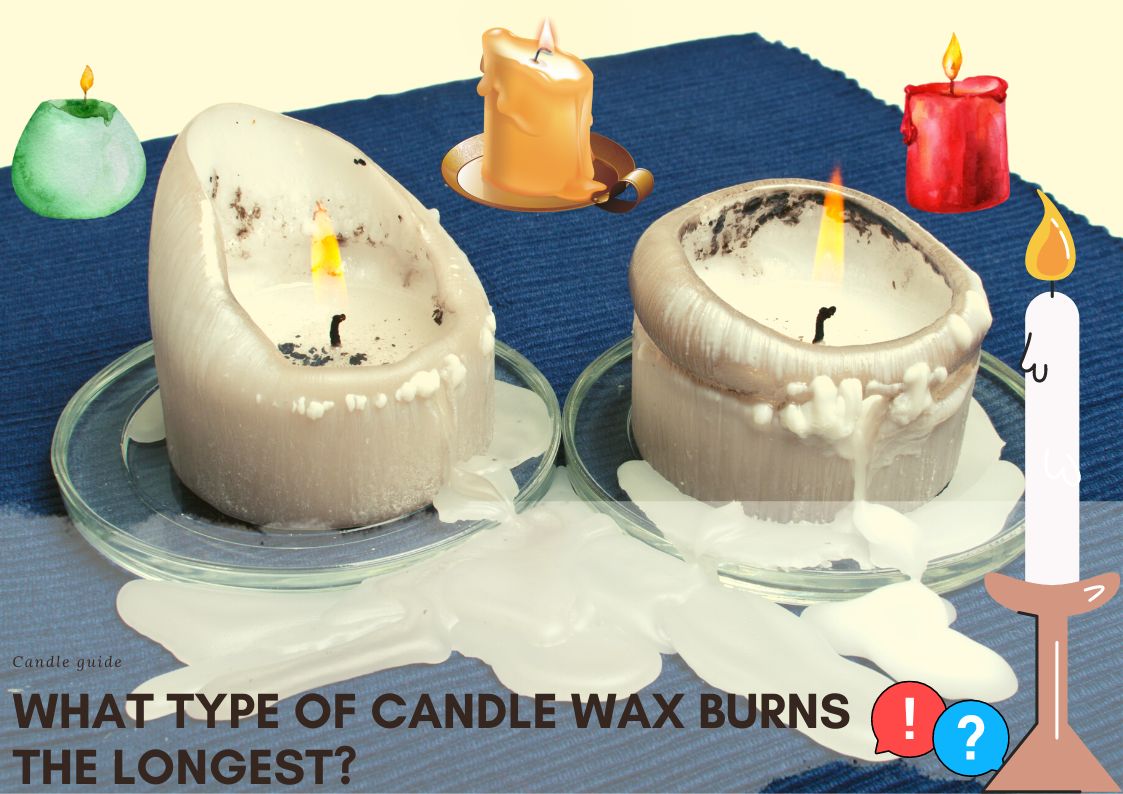If you are about to buy or make a candle, there are many aspects to consider. One of the most important of these is certainly how long the candle will burn. Most people only consider the type of wick and the amount of wax, but fewer people consider that the type of wax also plays a very important role in the burning time.
What determines the burning time of candles?
Common sense dictates that the most important factor when it comes to burn time is the amount of wax the candle is made from. While this is true to some extent, the reality is much more complex.
There are types of wax that melt at low temperatures and some that burn best at high temperatures. The lower the temperature at which a wax burns, the faster it will burn and the shorter the burn time it will provide. So if you plan to use your candle for a long time, choose a wax with the highest possible burning temperature.
The size of the wick also influences the burn time. The thicker the wick, the more wax it can "suck up" and burn at once. This means that a thick wick will consume even long-burning wax types more quickly than if a wick of the right diameter had been chosen.
To a lesser extent than previously mentioned, the human factor also affects the lifespan of a candle, if not properly extinguished and used, the wax may run out sooner than the ingredients themselves would allow.
What type of candle wax gives the longest burn time?
A good approximate idea of the burning temperature of each type of wax can be obtained by checking how soft they are at room temperature. A candle made from a coconut oil blend will be soft at room temperature, while a candle made from beeswax or a paraffin wax will be much harder.
The harder a wax is, the higher its melting point and (under the right conditions) the longer a candle made from this raw material will last. The melting points of the most common types of wax are listed below.
-
Beeswax: 144-149 ℉ (62-65 ℃)
-
Soy wax: 113-127 ℉ (45-53 ℃)
-
Paraffin: 99℉ (54 ℃)
-
Coconut blend wax (coconut wax mixed with soy wax): 124-127℉ (51- 53 ℃)

Beeswax
So if only the burn time is taken into account, beeswax is the best material. Of course, this has its drawbacks, as this raw material, although completely natural, is relatively expensive and difficult to work with. Although the high melting point is an advantage in terms of burn time, it can also be a disadvantage if we look at things from another angle. Candles made from it are less able to evenly distribute the added fragrances, and as the wax itself is not odorless, such candles will always have a slightly honey scent.
If you think about buying beeswax and look at the prices, you will find that beeswax can cost up to twice as much as soy wax for the same amount.
A 4oz beeswax candle (with the right wick) can burn for 25 hours, while a soy wax candle of the same size can burn for only 16. Given these figures, we cannot be 100% sure that this is the best choice financially.
Soy wax
If you consider not only burn time, but other factors as well, soy wax may be the best option. While it doesn't burn as long as a beeswax candle, it's also much cheaper and easier to work with. It absorbs colorants more easily and has a much more even scent throw.
Another big advantage is that it is completely environmentally friendly and more ecologically sustainable than even beeswax. Importantly, this raw material is also quite popular among hobby candle makers, so it will be much easier to obtain and there will be much more information on the internet about its correct use.
Paraffin wax
Paraffin wax has a good burn time and is the most receptive to added fragrances, but because it is not natural and renewable, but a by-product of oil refining, few hobby candle makers choose this alternative.
Although this is the cheapest candle wax, it may not be worth using, as it can burn up to 20% faster than a candle made from the same weight of soy wax.
Other waxes
Alternative, less popular waxes such as palm wax, rapeseed wax and coconut wax all burn at much lower temperatures. Coconut oil, for example, is liquid at room temperature and must be mixed with other waxes to make a solid candle.
Tips to make your candle last longer
The factors that have the greatest influence on the burn time of a candle have already been examined. However, it should be remembered that the way in which the candle is used also affects its burn time.
-
If you cut the wick short after each use, it is less likely to overheat, so it will burn cleaner and use less wax.
-
The biggest waste of wax is caused by the tunneling phenomenon. In this case, the wax does not melt over the entire surface of the candle and so the wick burns all the way through without using it. To avoid this, it is important to wait for the entire surface of the wax to melt on the first use.
-
Allow the candle to cool completely between each use.
So, in conclusion we can say that while beeswax can provide the longest burn time, soy wax is the best all around choice in this matter, because this material is a lot easier to work with and it is a lot more versatile. Being careful about how you use your candle can make even short-burning candles enjoyable for a relatively long time, so it's important to be careful with each burn.



